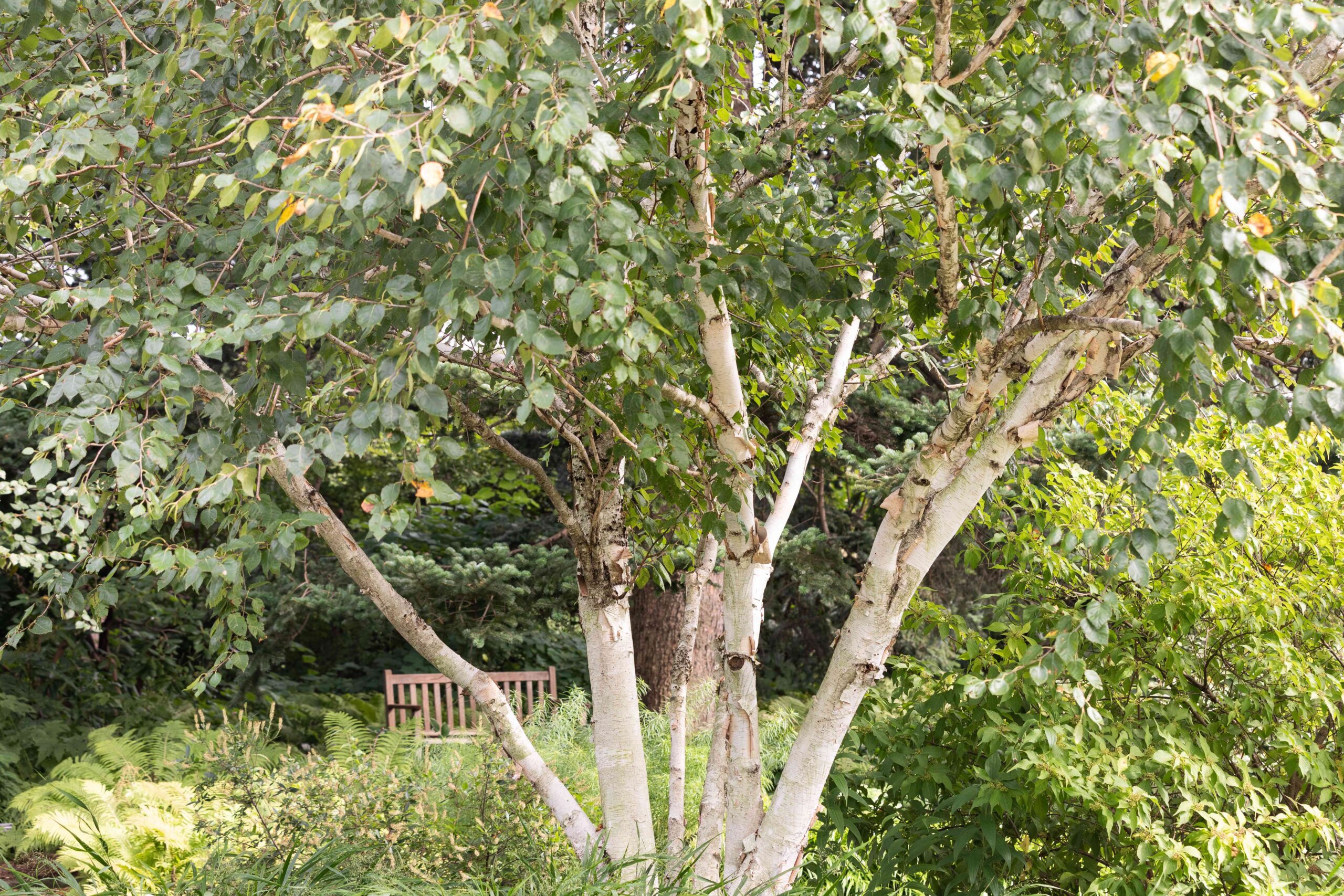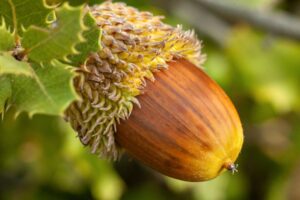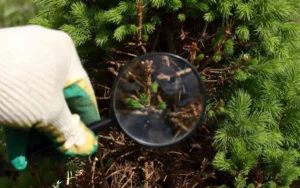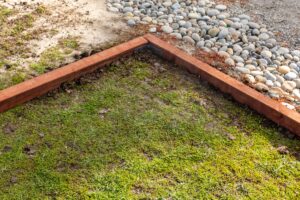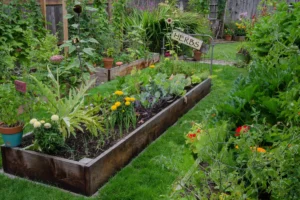Common Birch Trees for Your Garden: A Complete Guide
Transform your landscape with these elegant, adaptable trees that offer year-round visual interest
Birch trees stand as some of the most recognizable and beloved specimens in American landscapes. Their distinctive bark, graceful forms, and adaptability make them excellent choices for home gardens across numerous USDA hardiness zones. Whether you’re looking to create a striking focal point, add seasonal interest, or incorporate native species into your landscape design, birch trees offer versatility and charm that few other tree varieties can match.
In this comprehensive guide, you’ll discover everything you need to know about selecting, planting, and caring for common birch trees in your garden. From understanding their unique characteristics to identifying the best variety for your specific growing conditions, this article will help you make informed decisions about incorporating these magnificent trees into your outdoor space.
Understanding Birch Trees
The Botanical Background
Birch trees (Betula spp.) belong to the Betulaceae family and are classified as deciduous hardwoods. Native to the Northern Hemisphere, these trees have adapted to various climates, though they generally prefer cooler temperatures. According to the USDA Forest Service, there are approximately 40 species of birch worldwide, with about 15 native to North America.
What sets birch trees apart from other landscape trees is their distinctive bark, which often peels in paper-like layers. This characteristic, combined with their elegant form and seasonal interest, makes them highly prized in landscape design. Their relatively fast growth rate—typically 1-2 feet per year—allows them to quickly establish themselves in your garden.
Key Characteristics of Birch Trees
Birch trees possess several defining features that make them stand out in the landscape:
- Bark: Perhaps their most notable feature, birch bark ranges from bright white to reddish-brown depending on the species. Many varieties feature exfoliating bark that peels in horizontal strips, creating visual interest year-round.
- Leaves: Birch trees have simple, alternate leaves that are typically triangular or ovate with serrated edges. In fall, most species display golden yellow foliage before leaf drop.
- Form: Most birch trees have a pyramidal or oval shape when young, developing a more rounded crown with age. They typically feature graceful, somewhat pendulous branches that add elegance to the landscape.
- Size: Depending on the species, mature birch trees can range from 30 to 70 feet in height with a spread of 15 to 35 feet.
- Lifespan: While not as long-lived as oaks or maples, birch trees typically have a lifespan of 40-50 years in favorable conditions.
Popular Birch Species for American Gardens
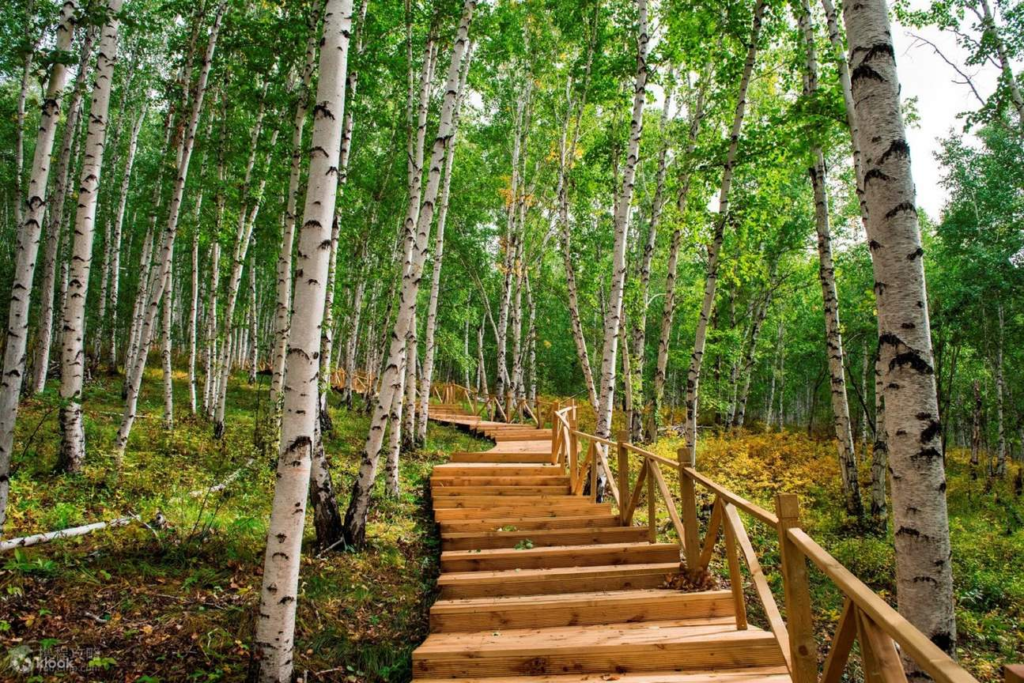
River Birch (Betula nigra)
If you’re seeking a birch tree with exceptional heat tolerance and disease resistance, the river birch deserves your attention. Native to the eastern United States, this adaptable species thrives in USDA zones 4-9, making it suitable for gardens from New England to Florida and west to Texas.
River birch features exfoliating bark that reveals shades of salmon-pink to cinnamon-brown underneath, creating a stunning visual effect, especially in winter when the tree is bare. Unlike many other birch species, river birch demonstrates remarkable resistance to the bronze birch borer, a destructive pest that frequently affects other varieties.
For smaller gardens, consider ‘Heritage’ or ‘Dura-Heat’—cultivars specifically developed for compact spaces and enhanced heat tolerance. River birch performs exceptionally well in moist soils but demonstrates surprising drought tolerance once established.
Paper Birch (Betula papyrifera)
The paper birch, also known as white birch or canoe birch, represents the quintessential birch tree that most people envision. With its bright white bark that peels in horizontal strips, this North American native creates a striking presence in the landscape, particularly when planted against an evergreen backdrop or as a specimen tree.
Best suited for USDA zones 2-7, paper birch prefers the cooler climates of the northern United States. This species reaches heights of 50-70 feet at maturity, with a spread of 25-35 feet. Paper birch offers exceptional winter interest with its snowy bark contrasting beautifully against the winter sky.
When planting paper birch, remember that it prefers cool, moist conditions with afternoon shade in warmer regions. This helps prevent stress that can make the tree susceptible to bronze birch borer infestations.
European White Birch (Betula pendula)
The European white birch, with its distinctive weeping form, brings an elegant, almost poetic quality to garden landscapes. This non-native species features bright white bark with black markings and delicate, pendulous branches that sway gracefully in the breeze.
Suited for USDA zones 2-7, European white birch requires cooler conditions similar to paper birch. At maturity, it reaches heights of 40-50 feet with a spread of 20-30 feet. The cultivar ‘Youngii’ offers a more compact, weeping form that’s particularly well-suited for smaller gardens.
While European white birch offers undeniable ornamental value, be aware that it’s highly susceptible to bronze birch borer in North America. For this reason, it’s often recommended to choose native alternatives in regions where this pest is prevalent.
Yellow Birch (Betula alleghaniensis)
For gardeners seeking a longer-lived birch species with exceptional autumn color, yellow birch provides an excellent option. Native to northeastern North America, this stately tree features golden-bronze exfoliating bark that darkens with age and bright yellow fall foliage.
Thriving in USDA zones 3-7, yellow birch prefers cooler temperatures and moist, well-drained soil. It’s a larger species, often reaching heights of 60-75 feet with a spread of 30-40 feet, making it best suited for spacious landscapes.
Yellow birch offers superior resistance to many pests and diseases that affect other birch species, contributing to its longer lifespan of 100-150 years—significantly longer than most other birch varieties.
Gray Birch (Betula populifolia)
If you’re working with a smaller garden or challenging growing conditions, gray birch might be your ideal choice. This compact North American native typically reaches just 20-30 feet in height with a spread of 15-20 feet, making it appropriate for more confined spaces.
Gray birch features white bark that doesn’t peel as dramatically as paper birch but still offers visual interest. What makes this species particularly valuable is its adaptability to poor soil conditions—it naturally colonizes disturbed areas and can thrive where other trees struggle.
Best suited for USDA zones 3-7, gray birch serves well as a transitional or pioneer species in garden restoration projects or as a specimen tree in smaller landscapes.
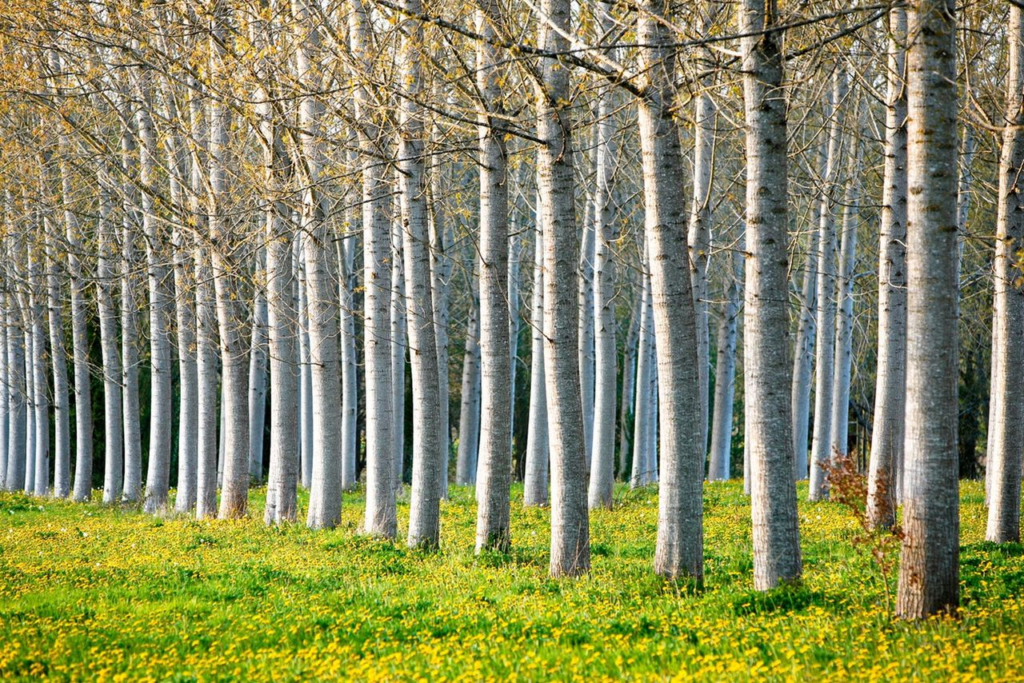
Comparative Analysis of Common Birch Trees
| Species | USDA Zones | Height (ft) | Spread (ft) | Bark Characteristics | Notable Features | Pest Resistance | Lifespan (years) |
|---|---|---|---|---|---|---|---|
| River Birch (Betula nigra) | 4-9 | 40-70 | 25-35 | Salmon to cinnamon exfoliating | Heat tolerance, multi-stem form | Excellent | 50-75 |
| Paper Birch (Betula papyrifera) | 2-7 | 50-70 | 25-35 | Bright white peeling | Classic white bark, yellow fall color | Moderate | 40-50 |
| European White Birch (Betula pendula) | 2-7 | 40-50 | 20-30 | White with black markings | Weeping form, delicate branches | Poor | 30-40 |
| Yellow Birch (Betula alleghaniensis) | 3-7 | 60-75 | 30-40 | Golden-bronze exfoliating | Aromatic twigs, yellow fall color | Good | 100-150 |
| Gray Birch (Betula populifolia) | 3-7 | 20-30 | 15-20 | White, minimally peeling | Compact size, adaptable to poor soils | Moderate | 30-50 |
Planting and Caring for Birch Trees
Site Selection and Preparation
The key to successfully growing birch trees lies in proper site selection. These trees generally prefer:
- Light conditions: Most birch trees thrive with morning sun and afternoon shade, especially in warmer regions (zones 6-9). This light pattern helps keep their roots cool while providing sufficient sunlight for healthy growth.
- Soil requirements: Birch trees prefer moist, well-drained, acidic to neutral soil with plenty of organic matter. River birch demonstrates greater adaptability to various soil types, including clay, while other species may struggle in heavy soils.
- Space considerations: When planning your garden, remember that birch trees need adequate space for their mature size. While they grow relatively quickly, allowing sufficient room prevents future problems with crowding or competition.
Before planting, conduct a soil test to determine your soil’s pH and nutrient levels. If necessary, amend the soil with compost to improve drainage and fertility. For optimal results, prepare a planting hole twice as wide as the root ball but no deeper than the container or root ball height.
Planting Techniques
The best time to plant birch trees is during their dormant season—either late fall after leaf drop or early spring before bud break. This timing minimizes transplant shock and gives the tree an opportunity to establish roots before facing the stresses of summer heat.
Follow these steps for successful planting:
- Dig a hole twice as wide as the root ball but no deeper than the height of the root ball.
- Remove any containers, burlap, or wire baskets from the root ball.
- Gently place the tree in the hole, ensuring that the top of the root ball sits slightly above the surrounding soil level.
- Backfill with native soil, avoiding amendments in the backfill which can discourage roots from expanding beyond the planting hole.
- Create a small berm around the drip line to help hold water.
- Apply 2-3 inches of mulch around the base of the tree, keeping it several inches away from the trunk to prevent rot and disease.
- Water thoroughly after planting.
Many birch species are available in multi-stem forms, which offer enhanced visual interest and a more natural appearance. When selecting between single-trunk and multi-stem specimens, consider both the aesthetic goals for your landscape and the growing conditions—multi-stem forms often provide better stability in windy locations.
Ongoing Care and Maintenance
Watering Requirements
Proper watering is crucial for birch tree health and establishment. During the first growing season, water deeply once or twice weekly, providing about 1-1.5 gallons per inch of trunk diameter. In subsequent years, water during dry periods, particularly during summer months.
Birch trees have relatively shallow root systems that can dry out quickly. Applying mulch helps conserve soil moisture and moderate soil temperatures, benefiting the tree’s health. A layer of 2-3 inches of organic mulch spread in a circle around the tree (but not touching the trunk) proves highly beneficial.
Fertilization Guidelines
Birch trees generally don’t require heavy fertilization when planted in reasonably fertile soil. However, a light application of balanced, slow-release fertilizer in early spring can promote healthy growth. The USDA Natural Resources Conservation Service recommends a 10-10-10 or similar balanced formula applied at half the recommended rate for established trees.
For the first few years after planting, focus on providing adequate water rather than fertilizer. Over-fertilization can lead to excessive top growth at the expense of root development, potentially making the tree more vulnerable to drought stress.
Pruning Practices
Birch trees require minimal pruning when properly sited. When necessary, prune during late summer or early fall to avoid the sap flow that occurs in spring. Remove dead, damaged, or crossing branches, maintaining the tree’s natural form rather than attempting heavy structural pruning.
Never remove more than 25% of the canopy in a single pruning session, as this can stress the tree. Additionally, avoid pruning during the growing season when bronze birch borers are active (typically May through August), as fresh pruning wounds can attract these destructive pests.
Common Problems and Solutions
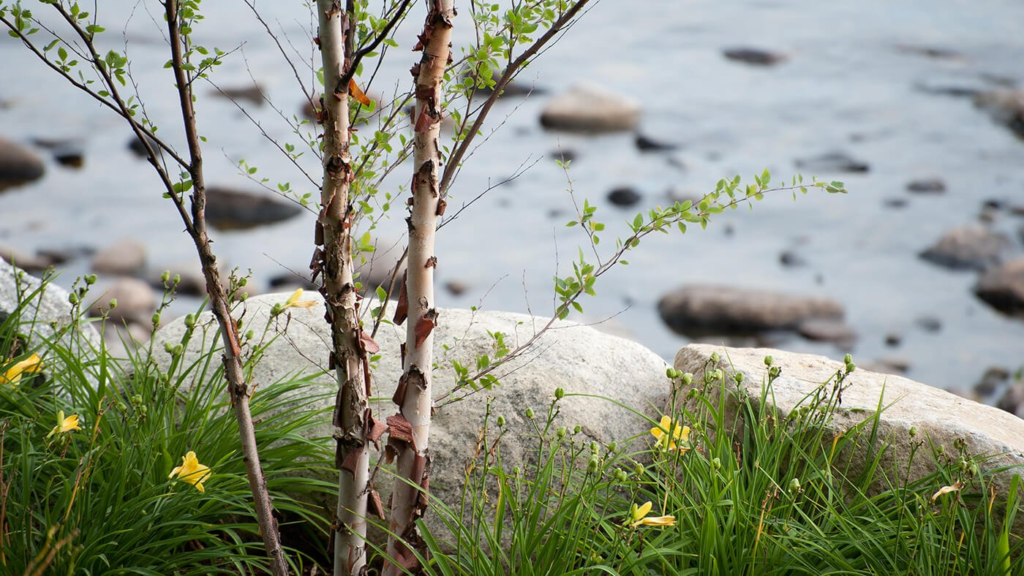
Pest Management
The bronze birch borer represents the most significant pest threat to birch trees in North America. This wood-boring beetle primarily targets stressed trees, particularly those suffering from heat or drought stress. Signs of infestation include D-shaped exit holes in the bark, thinning in the upper canopy, and zigzag galleries under the bark.
To prevent bronze birch borer infestation:
- Choose resistant species like river birch or yellow birch
- Plant in appropriate sites with afternoon shade
- Maintain consistent soil moisture
- Avoid unnecessary pruning during active borer season (May-August)
Other common pests include birch leafminer, which causes brown blotches on leaves, and birch aphids, which can cause leaf curl and honeydew secretion. For most pest issues, maintaining tree health represents the first line of defense. Chemical controls should be used sparingly and only when necessary.
Disease Prevention
Birch trees can suffer from several fungal diseases, including leaf spots, cankers, and wood decay. Most fungal problems are exacerbated by poor air circulation or excessive moisture on foliage. To minimize disease issues:
- Provide adequate spacing between trees to promote air circulation
- Avoid overhead irrigation, which can keep foliage wet
- Remove and dispose of infected leaves or branches promptly
- Maintain tree vigor through proper watering and occasional fertilization
Chlorosis (yellowing leaves with green veins) often indicates iron deficiency, particularly in alkaline soils. Address this issue by acidifying the soil with sulfur products or by applying chelated iron according to product directions.
Landscape Design with Birch Trees
Effective Placement Strategies
Birch trees serve multiple roles in landscape design, from creating focal points to providing seasonal interest. Consider these placement strategies:
- Specimen planting: A single birch (particularly multi-stem varieties) creates a striking focal point in the landscape. Paper birch and river birch excel in this role.
- Groupings: Planting birch trees in groups of three or five mimics their natural growing pattern and creates a more dramatic visual impact. This approach works particularly well with river birch and paper birch.
- Woodland edge: Birch trees can effectively transition between wooded areas and more formal garden spaces, creating a natural-looking boundary.
- Foundation planting: Compact varieties like gray birch or dwarf cultivars can work near the home’s foundation, provided they’re given adequate space for root development.
Companion Planting Recommendations
Enhance your birch tree’s impact by surrounding it with complementary plants:
- Shade-loving perennials: Hostas, ferns, astilbes, and heucheras thrive in the dappled shade beneath birch trees and create a lush understory.
- Spring bulbs: Daffodils, tulips, and crocus planted around the base of birch trees provide early season color before the tree fully leafs out.
- Native shrubs: Viburnums, dogwoods, and serviceberries complement birch trees while providing additional wildlife value.
- Groundcovers: Woodland wildflowers like Virginia bluebells, trillium, and wild ginger create a naturalistic setting that complements the birch’s woodland character.
When designing your birch tree planting, remember that these trees have relatively shallow roots that can compete with nearby plants. Select companion plants that won’t require frequent division or disturbance, which could damage the birch’s root system.
Seasonal Interest and Wildlife Value

Year-Round Visual Appeal
One of birch trees’ greatest landscape attributes is their year-round visual interest:
- Spring: Delicate catkins dangle from branches as leaves emerge in vibrant chartreuse.
- Summer: The canopy provides dappled shade with a gentle rustling sound in the breeze.
- Fall: Golden yellow foliage brightens the autumn landscape before leaf drop.
- Winter: Distinctive bark stands out against snow or evergreen backdrops.
To maximize seasonal interest, consider strategic placement that highlights these changing characteristics. Positioning a white-barked species like paper birch against evergreens or a dark-colored fence creates spectacular winter contrast.
Ecological Benefits
Beyond their ornamental value, birch trees provide significant ecological benefits in your garden:
- Wildlife habitat: Birch trees support numerous bird species, including chickadees, finches, and woodpeckers. Their catkins provide an early season food source, while their branching structure offers nesting sites.
- Host plant: Birch trees serve as host plants for several butterfly and moth species, including the mourning cloak butterfly and the beautiful luna moth.
- Soil improvement: The leaf litter from birch trees decomposes relatively quickly, adding valuable organic matter to the soil beneath.
By incorporating birch trees into your landscape, you’re not only enhancing your garden’s beauty but also contributing to local biodiversity and ecological health.
Conclusion
Birch trees offer a perfect combination of beauty, adaptability, and ecological value for American gardens. With their distinctive bark, graceful forms, and seasonal interest, these elegant trees create lasting impact in the landscape. By selecting the right species for your specific growing conditions and following proper planting and care techniques, you can enjoy the many benefits of birch trees for decades to come.
Whether you choose the heat-tolerant river birch, the classic paper birch, or one of the other excellent species discussed, you’re making a landscape investment that will pay aesthetic dividends throughout the seasons. As you watch your birch tree grow and develop its characteristic features, you’ll understand why these trees have captured gardeners’ hearts for generations.
Remember that proper site selection, consistent care, and appropriate companion planting will help your birch tree thrive, providing beauty and ecological benefits for years to come. With their combination of graceful form, distinctive bark, and four-season interest, birch trees truly earn their place among the most beloved trees for American gardens.
